General Military Terms and Concepts Guide: Essential Knowledge for Military Enthusiasts
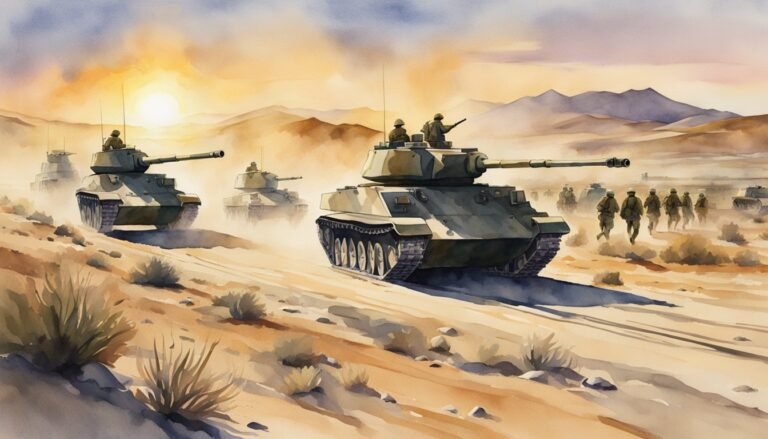
Understanding general military terms and concepts is crucial for anyone interested in the armed forces. These terms form the basis of communication and strategy within the military.
By grasping these concepts, you can better appreciate the complex structure and operations that keep a military organization running efficiently.
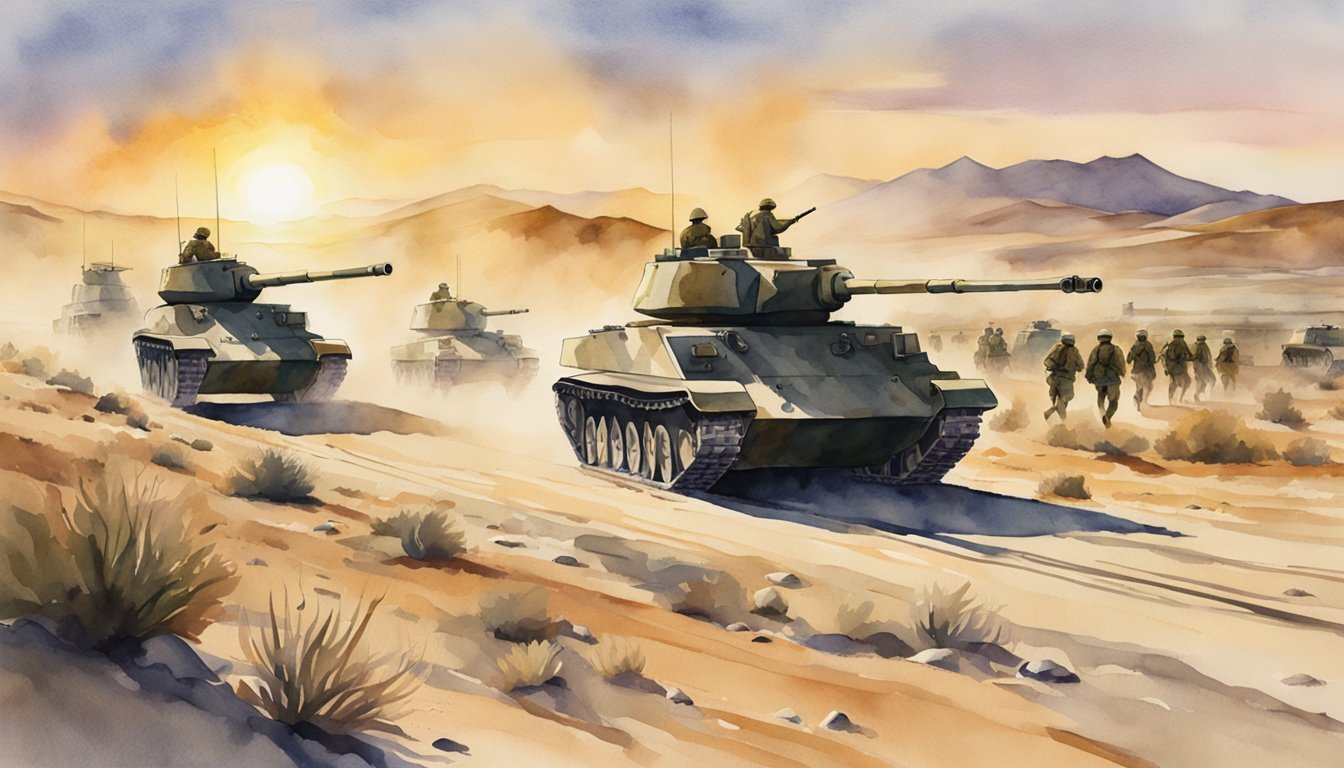
Military structure includes various ranks, units, and branches, each with specific roles and responsibilities.
Knowledge of these fundamentals helps you understand the hierarchy and the flow of command.
From basic training to specialized duties, each service member plays a vital part in achieving military objectives.
Communication is another key aspect, using standard terminology to ensure clarity and prevent misunderstandings.
Effective logistics and support systems are essential for sustaining military operations, ensuring that personnel and equipment are always ready.
This guide will further explore these elements, giving you a comprehensive view of military life and operations.
Key Takeaways
- Understanding military terms is essential for clear communication and strategy.
- The military structure includes ranks and responsibilities critical for operation.
- Effective logistics and communication are key for successful military missions.
Fundamentals of Military Structure
Understanding the structure of the military is key to grasping how the armed forces function.
This section breaks down the hierarchy, different branches, and the organization of military units.
Hierarchy and Ranks
The military operates through a clear hierarchy. Enlisted personnel usually make up the majority and start at the lowest ranks, such as Private in the Army or Seaman Recruit in the Navy. Non-Commissioned Officers (NCOs), like Sergeants, play vital roles in supervising lower-ranked personnel. Officers, including Lieutenants and Captains, command units and make strategic decisions.
Ranks are crucial as they dictate roles, responsibilities, and authority levels within the service.
Each military branch has its ranks, but certain equivalencies exist.
For instance, an Army Captain is comparable to a Navy Lieutenant.
The structure ensures that everyone knows their place and duties within the larger organization, which is essential for coordination and effective operation.
Various Military Branches
The U.S. military consists of five main branches: Army, Navy, Air Force, Marine Corps, and Coast Guard.
The Army is the largest and primarily handles land-based operations.
The Navy controls sea-based operations and ensures maritime security.
The Air Force oversees air and space operations.
The Marine Corps specializes in rapid-response and amphibious warfare.
The Coast Guard focuses on maritime law enforcement and search-and-rescue within U.S. waters.
Each branch has active duty members, reserves, and a National Guard component, except for the Coast Guard, which operates under the Department of Homeland Security during peacetime.
The branches work together under the Department of Defense to protect the nation’s security.
Understanding Military Units
Military units are organized by size and function.
Basic units, like squads in the Army or fire teams in the Marine Corps, consist of a small number of personnel. Platoons combine several squads and are led by a Lieutenant. Companies or troops group multiple platoons and are typically commanded by a Captain.
Larger formations include battalions, regiments, and brigades.
The Air Force organizes into flights, squadrons, and wings.
The Navy’s primary operational units are ships and submarines, grouped into fleets.
Each unit type supports specific mission requirements, ensuring the military can operate effectively across various environments and situations.
By understanding these fundamentals, you gain insight into how the military maintains its structure and readiness across different branches and units.
Military Training and Duties
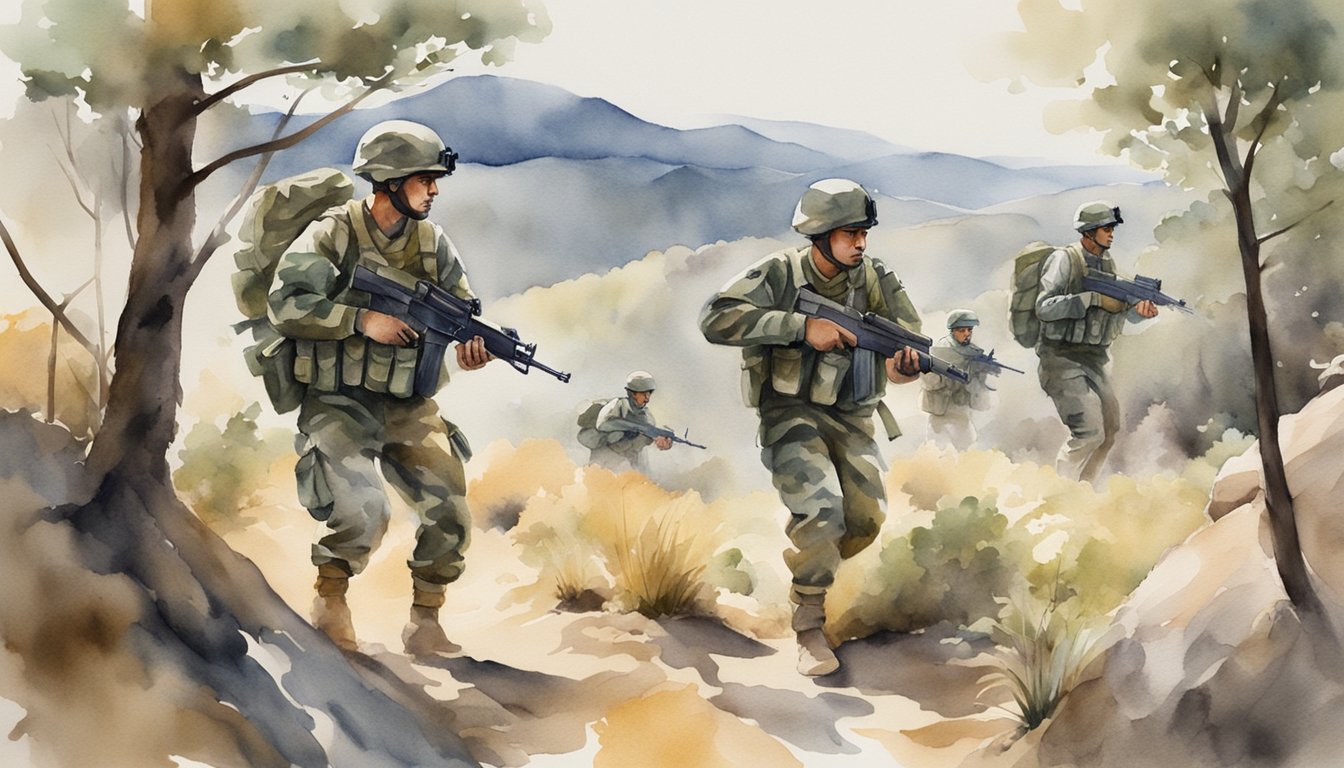
Military training covers basic training elements, specialized military roles, and the details of various duty stations and deployments.
Understanding these aspects is crucial for anyone considering a military career or supporting someone who is.
Basic Training Elements
Basic training is the foundation for military recruits.
It involves intense physical conditioning to prepare for the demands of service.
You will learn and practice drills that instill discipline and teamwork. Physical fitness is tested regularly.
Classroom sessions cover military laws, customs, and history.
You will also receive instruction on weapon handling and basic combat skills.
This training aims to transform you from a civilian into a capable soldier, ready for different challenges.
Specialized Military Roles
After basic training, you may move into specialized roles like infantry or combat engineers.
Infantry soldiers are trained for direct combat, excelling in weapons use and tactical maneuvers.
Combat engineers focus on construction and demolition tasks, vital for missions that require building or breaking down structures.
Each role requires unique skills and additional training.
Your occupation in the military will depend on your abilities and the needs of your branch.
Specialized training ensures you are prepared for specific duties that go beyond general soldier tasks.
Duty Stations and Deployment
Once your training is complete, you will be assigned to a duty station.
These locations, sometimes referred to as Permanent Change of Station (PCS), can be anywhere your skills are needed.
You might be stationed domestically or overseas, depending on your role and current military needs.
Deployment can take you to various regions for different missions.
Deployments are rotating assignments that can last from several months to over a year.
Being deployed involves adapting to new environments quickly and executing your duties under different conditions.
This phase is critical in real-world applications of your training.
Tactical Operations
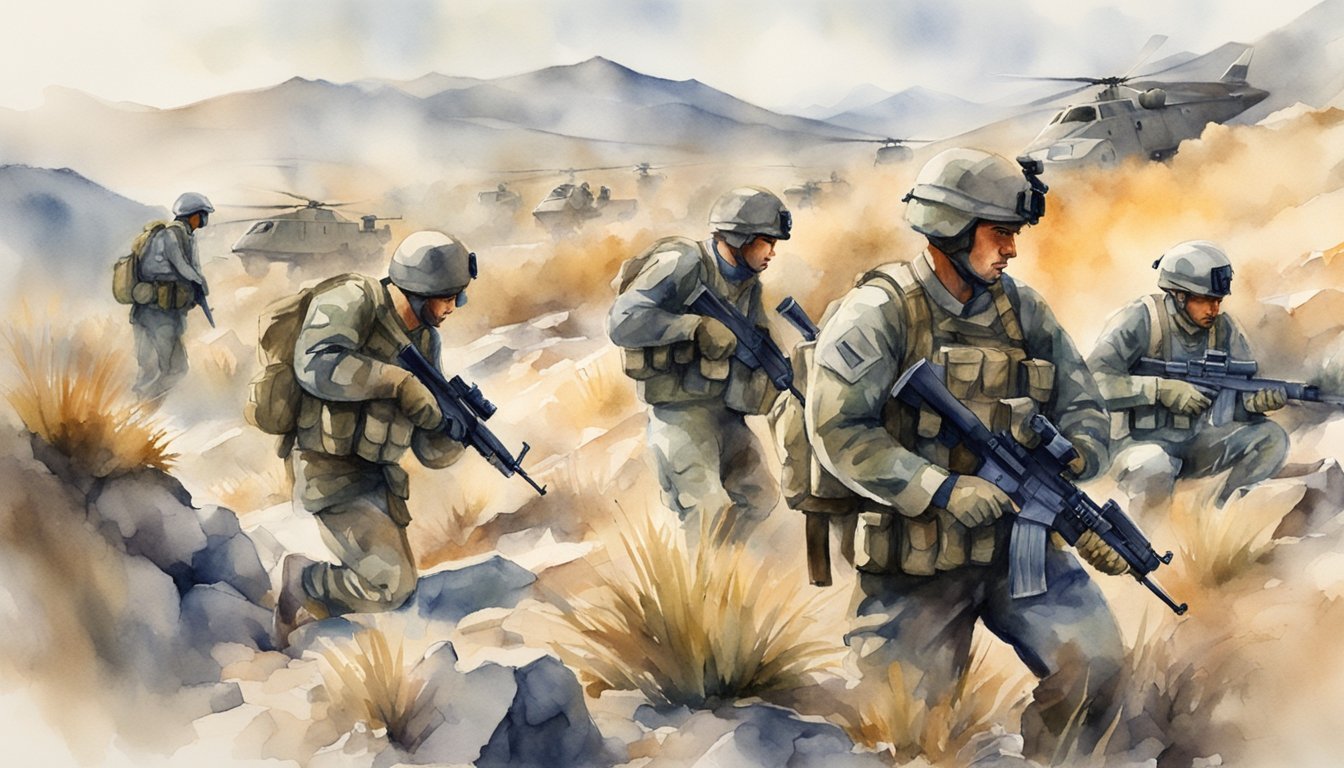
Tactical operations involve planning and executing military actions to achieve specific goals on the battlefield.
These actions include offensive and defensive measures, strategic planning, and the use of maneuvers and security techniques to ensure success.
Offensive and Defensive Actions
Offensive actions aim to take the initiative and dominate the enemy.
This includes assaults, where units engage directly with enemy forces, and artillery strikes to weaken enemy positions from a distance. Breach operations can be conducted to break through or secure a passage through an enemy defense.
Defensive actions, on the other hand, focus on protecting and holding positions.
This includes establishing secure perimeters to protect key assets and using natural or man-made obstacles to deter enemy advances. Counter-attacks may be planned to regain lost ground.
Military Strategies
Military strategies are designed to meet specific objectives through careful planning and coordination. Mass, or concentrating combat power at a decisive point, is crucial.
This can be achieved through regrouping forces or using artillery to create a focus area.
Deception and surprise play integral roles in strategy, making the enemy misinterpret your intentions. Coordinated fire support like artillery or airstrikes helps to soften targets before an assault.
These strategies aim to disrupt and dismantle the enemy’s plans.
Importance of Maneuver and Security
Maneuvering involves moving forces to advantageous positions while avoiding enemy strengths.
This requires speed, flexibility, and an understanding of the terrain.
Effective maneuvers can outflank or bypass enemy positions, leading to a tactical advantage.
Security ensures the safety and effectiveness of the unit.
This involves intelligence gathering, secure communications, and defensive measures to protect against enemy infiltration.
Proper security allows for successful maneuvers and maintains the integrity of the operation.
Achieving mastery in tactical operations demands rigorous training, in-depth knowledge, and coordinated efforts, making them vital components of military doctrine.
Military Communication
Effective military communication ensures that orders are transmitted clearly and efficiently, using precise terms and reliable equipment.
Proper communication methods can mean the difference between success and failure in operations.
Below, we look at two key aspects: the phonetic alphabet and critical communication equipment.
The Phonetic Alphabet
The phonetic alphabet is an essential tool used by the military to avoid confusion in verbal communication.
Each letter of the alphabet is assigned a specific word, which helps to clarify spoken messages, particularly over radio or in noisy environments.
For example, “A” is “Alpha” and “B” is “Bravo”.
This standardized system reduces errors and misunderstandings that can occur with similar-sounding letters.
Here’s a simplified table:
| Letter | Phonetic Code |
|---|---|
| A | Alpha |
| B | Bravo |
| C | Charlie |
| D | Delta |
Using the phonetic alphabet, you can spell out critical information with clarity, ensuring that the message is received correctly even under difficult communication conditions.
Critical Communication Equipment
Military communication relies on advanced and reliable equipment to ensure messages are sent and received accurately.
Key pieces of equipment include radios, satellite systems, and secure communication devices.
Radios are commonly used for short-range communication, providing a direct and immediate method for transmitting orders and information.
Satellite systems offer long-range capabilities, extending communication beyond visual range and across vast distances.
Secure communication devices, like encrypted phones and computers, are used to protect sensitive information from interception and ensure only authorized personnel can access the data.
Having well-maintained and up-to-date communication equipment is crucial for operational effectiveness.
Regular checks and training are necessary to ensure all devices function correctly when needed.
This equipment forms the backbone of military operations, allowing for coordinated action and rapid response to changing situations.
Logistics and Support
Logistics and support in the military involve managing supplies, equipment, and medical needs crucial for the operation’s success.
These operations ensure that troops have the resources and aid required during missions.
Medical and Evacuation Procedures
Medical evacuation, also known as medevac, is a critical procedure in military operations.
When soldiers are injured, they need swift and efficient transportation to medical facilities. Helicopters are often used because they can quickly reach remote or dangerous areas.
Medevac teams are trained to provide immediate care while en route to hospitals, keeping the injured stable.
Effective medical evacuation relies on coordination among various units.
Precise communication ensures helicopters arrive at the correct locations.
Troops are also equipped with small arms protective inserts (SAPI), which are part of body armor to reduce injury risks during combat.
These inserts are essential for enhancing the safety and survival of personnel in the field.
Military Supplies and Equipment
Logistics for military supplies and equipment covers everything from food and water to weapons and vehicles.
Ensuring availability and proper distribution is vital.
Supplies are categorized, allowing efficient management and quick access in different situations.
Military units rely on a wide range of equipment, including firearms, small arms protective inserts, and combat rations.
For example, modularized logistics systems are designed to provide scalable support, adapting to the fluctuating needs of missions.
Vehicles used in supply chains must be robust and reliable to traverse various terrains.
Correct allocation and adjudication of resources ensure that all units have what they need when they need it.
This includes considering strategic priorities and managing competing demands effectively, aiming to maximize both effectiveness and responsiveness across the board.
Military Installations
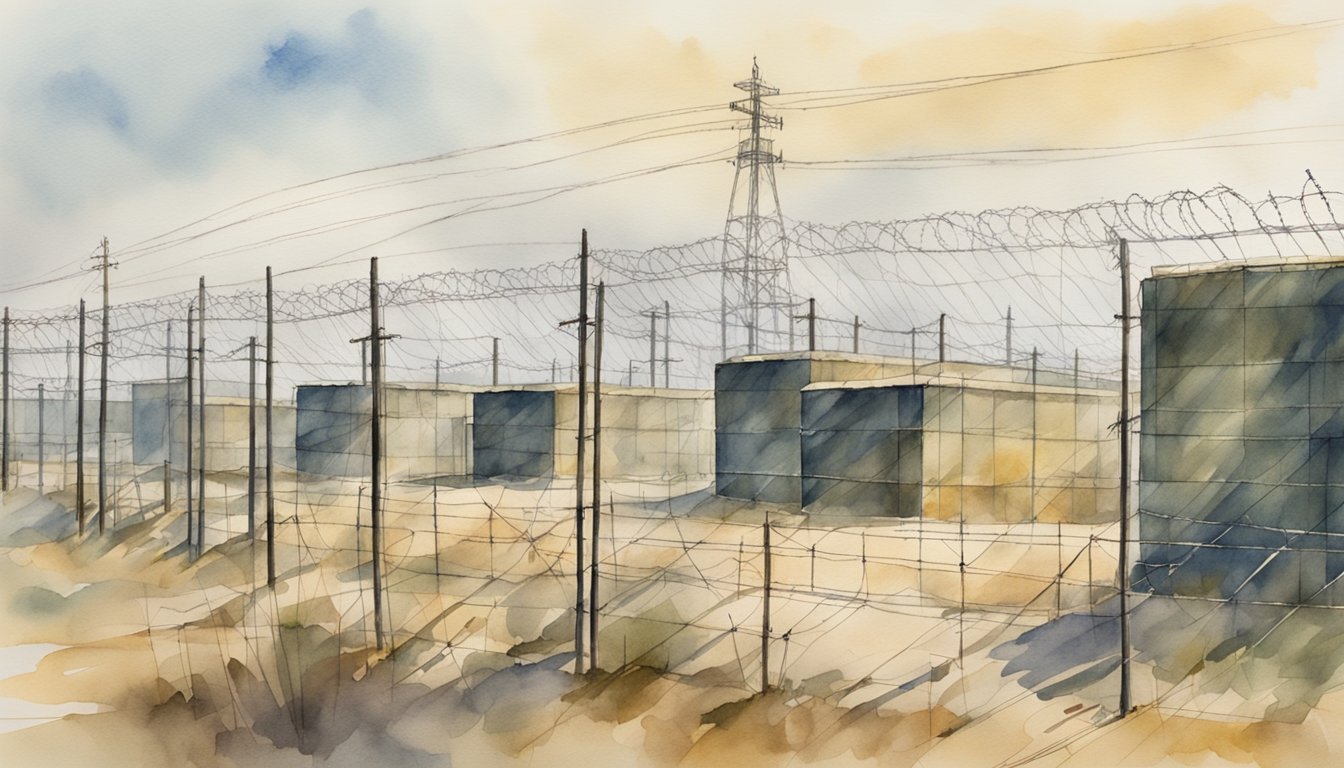
Military installations serve as crucial hubs for operational support, logistics, and strategy development.
These include large bases and smaller forward operating locations.
Bases and Forward Operating Locations
Bases:
Military bases, like the Pentagon, are central to the functioning of armed forces.
They house personnel, equipment, and command centers.
Bases provide training grounds, medical facilities, and housing for soldiers and their families.
Many bases also support defense industries and host international allies for joint exercises.
Forward Operating Locations:
These locations are used for temporary operations and aren’t as developed as bases.
They are crucial during active deployments and are often near conflict zones or in a demilitarized zone.
Forward operating bases (FOBs) allow troops to launch missions, manage logistics, and offer a quicker response time in critical areas.
Military Life and Culture
Military life involves a unique blend of structure, discipline, and leadership.
Understanding these elements is key to grasping life within the armed forces.
Daily Life and Discipline
Daily life in the military is regimented and predictable.
You follow a strict schedule that includes physical training, work duties, and personal time.
Each day begins with early morning physical training, often referred to as PT, which is essential for maintaining fitness and readiness.
Discipline is central to military life.
Orders from superiors are to be followed without question.
Punctuality, neatness, and adherence to uniform standards are expected.
Military police play a role in maintaining this discipline, ensuring order and adherence to rules.
Infractions can lead to serious consequences, reinforcing the importance of following protocol.
Living with others in close quarters, such as barracks, fosters a sense of camaraderie.
Shared experiences, from training to deployments, build strong bonds among service members.
This environment nurtures teamwork and mutual dependence, crucial for both everyday duties and critical missions.
The Role of Leadership
Leadership in the military is vital for success and morale.
Leaders are responsible for the welfare, training, and development of their subordinates.
This hierarchy ensures that orders are executed efficiently and effectively.
Good military leaders lead by example, demonstrating courage, commitment, and integrity.
They must make quick decisions under pressure and instill confidence in their units.
Effective communication is a must, as clear instructions can mean the difference between mission success and failure.
Leadership also involves mentorship.
Senior officers guide junior personnel, helping them grow in their roles and advance in their careers.
This mentorship is an integral part of military culture, promoting knowledge sharing and continuous improvement.
Leaders not only manage tasks but also inspire their teams to achieve their best.
Armed Conflict and Protection
Armed conflict often involves direct combat and the need for protective measures.
To stay safe and effective, understanding the nature of combat and the equipment designed for protection is essential.
Understanding Armed Combat
Armed combat refers to engagements involving military forces in opposition, such as battles and skirmishes.
Soldiers need to be aware of the constant risk of attacks, including threats like improvised explosive devices (IEDs).
IEDs are commonly used in modern warfare to target both military personnel and civilians.
Engaging in combat requires skill and strategy.
Training often includes weapons use, tactics, and situational awareness.
Combatants must rely on their training to make quick decisions under pressure.
They also need to trust their fellow soldiers and coordinate effectively to ensure success and safety on the battlefield.
Protective Measures and Armor
To protect against the dangers of armed conflict, various protective measures are employed.
Personal body armor is crucial for military personnel. Chicken plates, for example, are plates used in body armor to shield the torso from bullets and shrapnel.
These plates are typically made of materials like ceramic or Kevlar to provide maximum protection.
Modern military forces also use advanced equipment such as armored vehicles to safeguard troops.
These vehicles are reinforced to withstand blasts from IEDs and other attacks, offering a crucial layer of protection in combat zones.
Additionally, soldiers use helmets and other gear to protect vital areas from injury.
Staying updated on protective technologies and practices is vital for anyone involved in armed conflict to maximize safety and effectiveness during missions.
Military Jargon and Slang
The military has a unique way of communicating, filled with specific terms, slang, and acronyms that might confuse those unfamiliar with them.
Understanding these makes it easier to grasp military conversations and reports.
Common Military Terms
Military language is peppered with specific terms that reflect the distinct aspects of service life.
For instance, alpha charlie is a term used to denote ass-chewing, or disciplinary action.
If a soldier is AWOL (Absent Without Leave), it means they have left their post without permission.
Another common phrase is blue falcon, which stands for a buddy f***er, someone who betrays their fellow soldiers.
If you ever hear Charlie Foxtrot, they’re referring to a chaotic situation, often abbreviated to CF.
These terms help quickly convey complex ideas.
Decoding Acronyms and Slang
Acronyms and slang form a big part of military communication.
Phrases like FUBAR (Fouled Up Beyond All Recognition) and SNAFU (Situation Normal, All Fouled Up) are widespread.
They succinctly describe messy or problematic situations.
The military uses short forms like 1MC, referring to the ship’s public address system, and 11 Bang-Bang, which denotes an infantryman.
A specialized term like 40 Mike-Mike stands for an M203 grenade launcher.
These acronyms save time and ensure clarity in fast-moving scenarios.
For more on military language, check out resources like those found in Military.com on Military Terms and Jargon or this brief guide to modern military jargon.
Military Innovation and Future Concepts
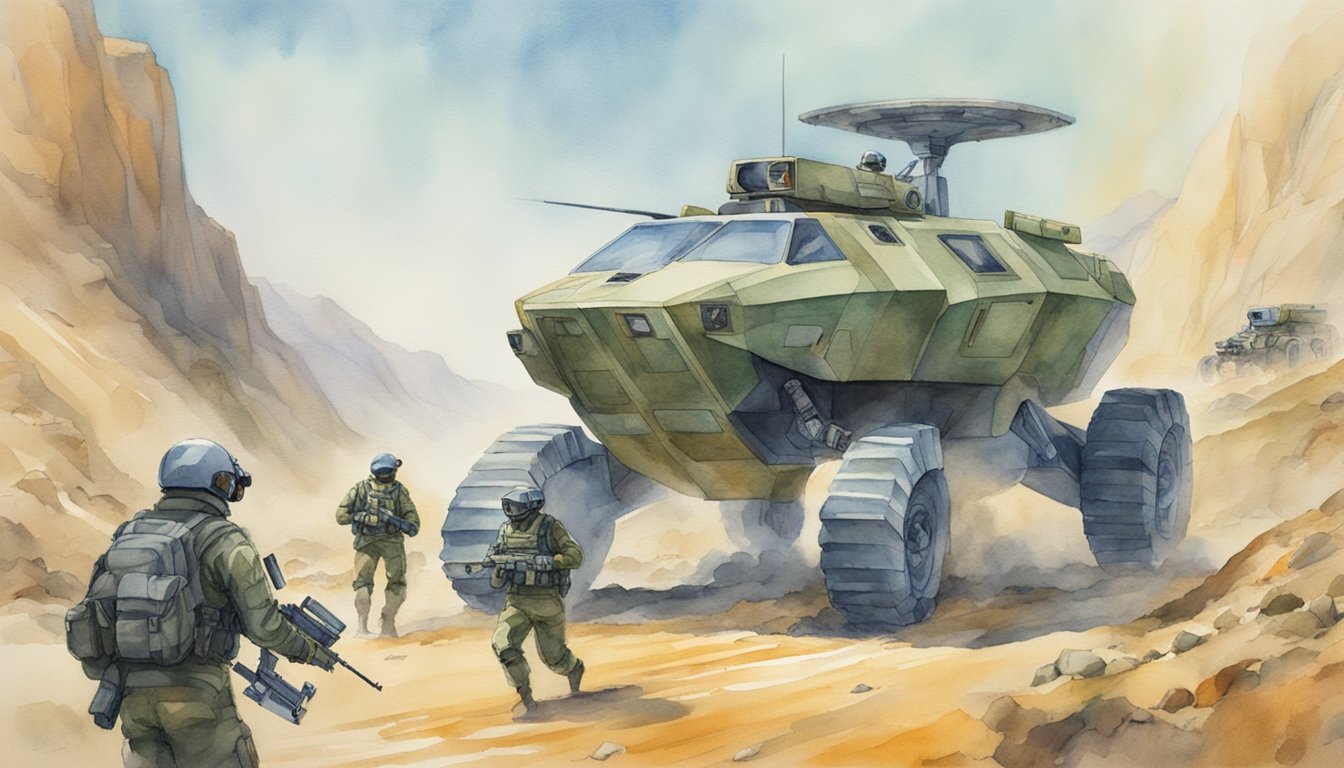
Innovations in military technology and emerging strategies are shaping how forces operate.
Modern warfare involves advancements that enhance efficiency and effectiveness.
Advancements in Military Technology
Modern militaries are incorporating cutting-edge technologies to stay ahead. Digital camouflage is one significant development.
It uses tech to blend vehicles and personnel into their surroundings, making them harder to detect.
Robotic systems and AI are also transforming the battlefield.
Drones can perform reconnaissance, while AI helps with decision-making and logistics.
This allows for quicker response times and less risk to human soldiers.
Cyber warfare tools are another area of growth.
These tools defend against cyber attacks and can disrupt enemy systems.
Effective cyber-warfare capabilities are critical in today’s networked world.
Emerging Warfare Strategies
Warfare strategies are evolving alongside technology. Insurgency tactics are becoming more sophisticated, necessitating new approaches in counter-insurgency.
Coordinating efforts in joint operation planning is essential.
This involves integrating different service branches to work seamlessly together.
Political warfare is gaining importance.
It uses a blend of propaganda, economic pressure, and other non-traditional methods to achieve objectives.
This approach requires innovative planning and execution.
Multi-domain operations are another key strategy.
Forces must operate across land, air, sea, cyber, and space domains.
This holistic approach ensures that no single domain becomes a weak link during combat.
By staying informed about these advancements and strategies, you can better understand the complexities of modern military operations.
Frequently Asked Questions
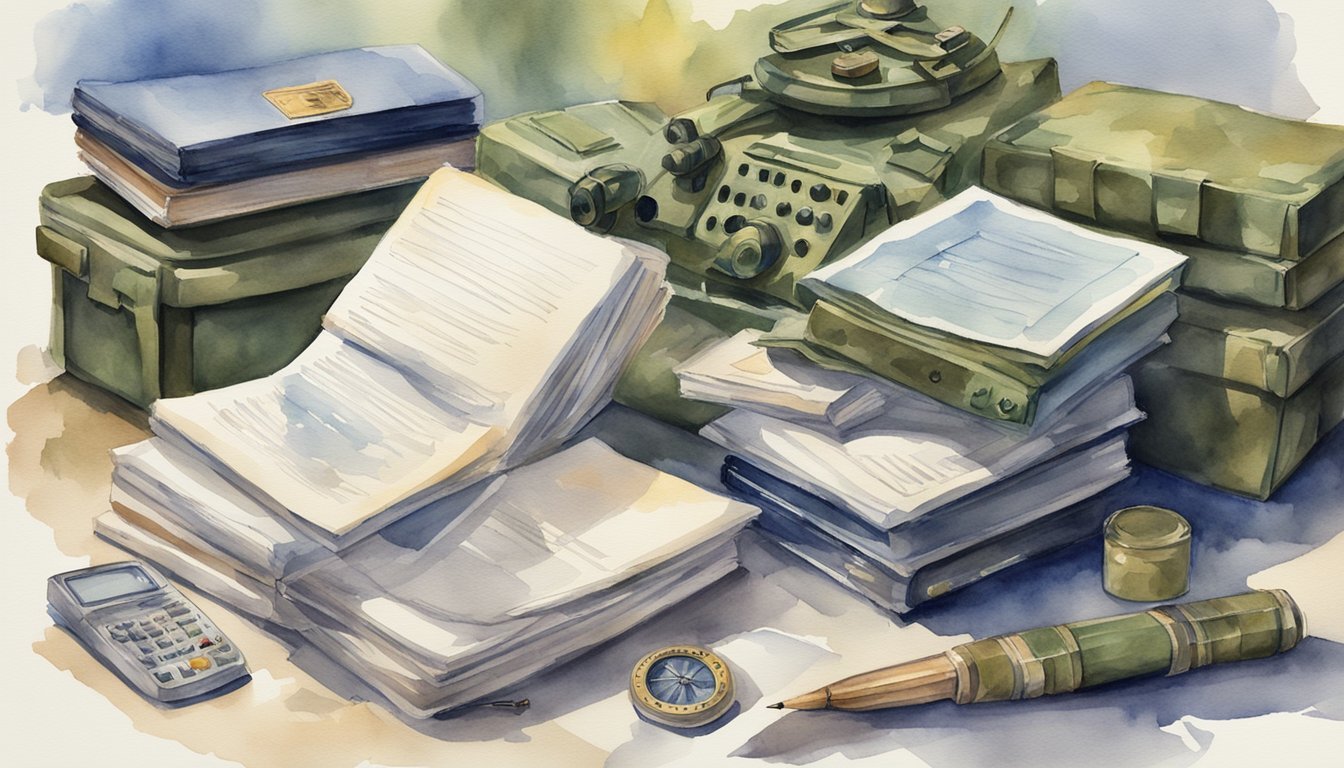
Get answers to some common questions about military terminology and concepts.
This guide helps you understand strategic principles, military slang, code words, and more.
What are the fundamental principles of military strategy and tactics?
Military strategy and tactics focus on achieving objectives through coordinated actions.
Strategies involve long-term planning to achieve a goal, while tactics are the specific methods used to execute these plans.
Key principles include unity of command, economy of force, and surprise.
What do the acronyms SNAFU and FUBAR stand for in military slang?
SNAFU stands for “Situation Normal, All Fouled Up,” indicating a standard state of confusion or disorder.
FUBAR stands for “Fouled Up Beyond All Recognition,” describing a situation that is irreparably damaged or chaotic.
How do military code words and phrases enhance operational security?
Military code words and phrases, also known as DoD Terminology, protect sensitive information.
These terms make communication secure, minimize misunderstandings, and ensure only authorized personnel understand the messages.
This practice is crucial during operations to maintain secrecy and efficiency.
What does ‘LZ’ stand for, and what is its significance in military operations?
‘LZ’ stands for “Landing Zone.” It is an area designated for the landing of helicopters and other aircraft during military operations.
The importance of an LZ lies in its role in ensuring safe and efficient troop deployment or extraction in combat zones.
Can you explain the concept of ‘force multiplier’ in military terms?
A ‘force multiplier’ refers to elements that increase the effectiveness of military forces.
Examples include advanced technology, high-quality training, superior logistics, or strategic alliances.
These factors boost a smaller force’s capability to achieve greater outcomes.
What are the most common military terms that have entered civilian use?
Several military terms have crossed into civilian life.
Examples include “AWOL” (Absent Without Leave), meaning someone is missing without permission, and “rendezvous,” referring to a planned meeting point.
These terms originally come from military jargon but are now commonly understood.






